How to Choose the Right Vinyl Flooring for Your Home
Last Edited: 4/12/24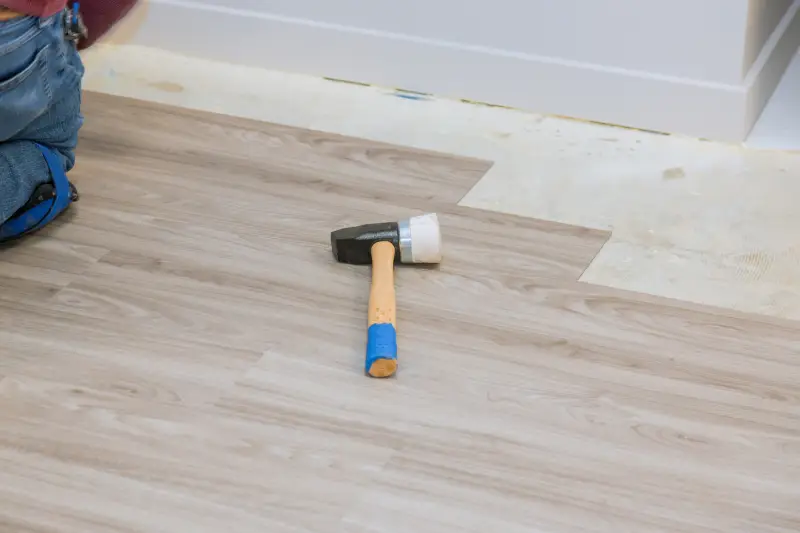
Do you need to freshen up your floors? Vinyl flooring may be what you’re looking for! Also known as synthetic flooring, vinyl flooring is available in various styles and colors and can be installed almost anywhere in the home or business. Vinyl flooring is also relatively cost-effective and fairly easy to install (provided you have the right tools), making it an excellent choice for many homeowners and businesses.
Besides the different styles and colors, there are also different types of vinyl flooring. Each type has pros and cons, so it’s important to take a good look at your project’s needs before picking out your new flooring.
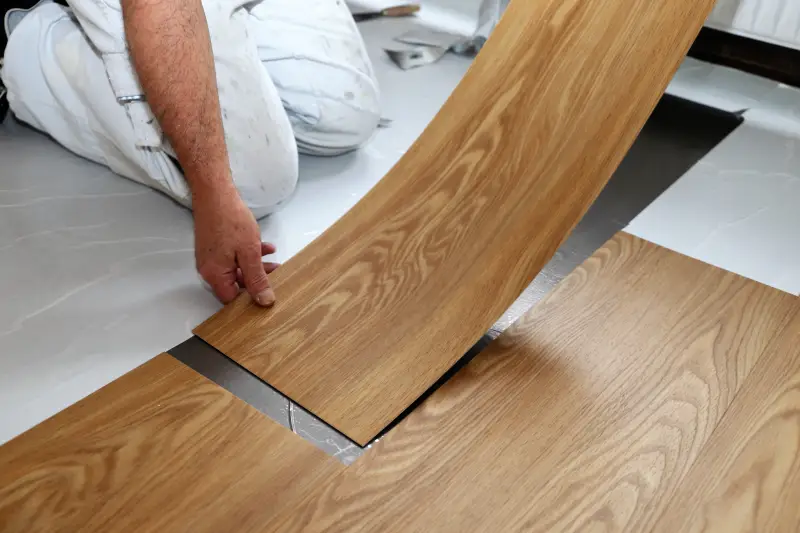
What is Vinyl Flooring?
If you’re researching new types of flooring for a project, you might be unfamiliar with what vinyl flooring is made of. Vinyl is a durable and functional type of flooring made of several layers of different synthetic materials. Due to its availability and versatility, vinyl flooring is a very popular choice among homeowners and businesses.
While wood or tile were previously the go-to flooring type, vinyl flooring has risen in popularity due to its many benefits. First and foremost, vinyl flooring is easier and less expensive to install, so if you’re looking to save some time and money, a vinyl floor is probably your best option. In addition to saving you time and money, vinyl flooring is also durable and functional. It holds up well in high-traffic areas and is not as susceptible to scratching as a wood floor. While tile is durable, holds up well to traffic, and doesn't damage as easily, it is more expensive and much harder to install. Vinyl is also moisture-resistant and comes in numerous colors, styles, and textures, with some closely mimicking the look of wood, stone, or marble. Now that we’ve explained exactly what synthetic flooring is let’s explore some vinyl flooring options!
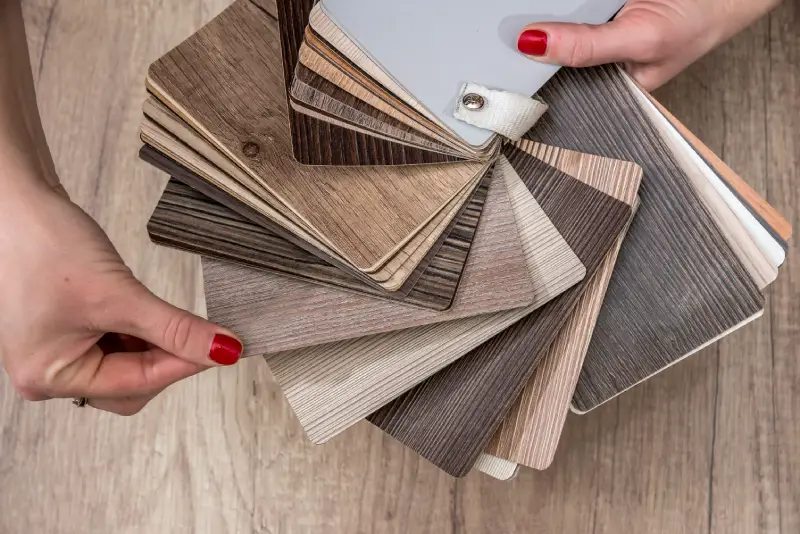
Types of Vinyl Flooring
As mentioned, vinyl flooring is available in a variety of options. There are three types of vinyl flooring: peel-and-stick vinyl flooring, vinyl plank, and vinyl sheet.
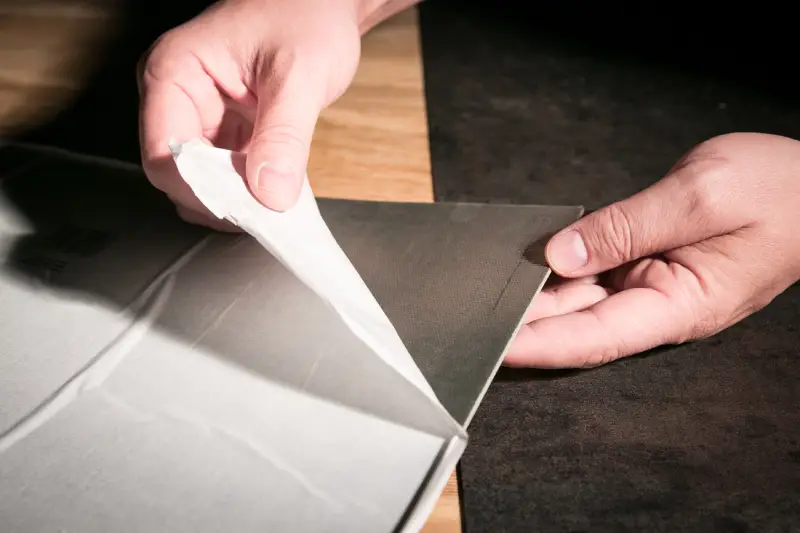
Peel-and-Stick Vinyl Flooring
Peel-and-stick vinyl flooring is a great option for smaller spaces. This type of flooring comes with the adhesive already applied to the back of the material. You simply peel off the backing and stick it to your subfloor. This type of flooring is a great choice for homeowners who do not have access to the tools needed to install other types of vinyl flooring.
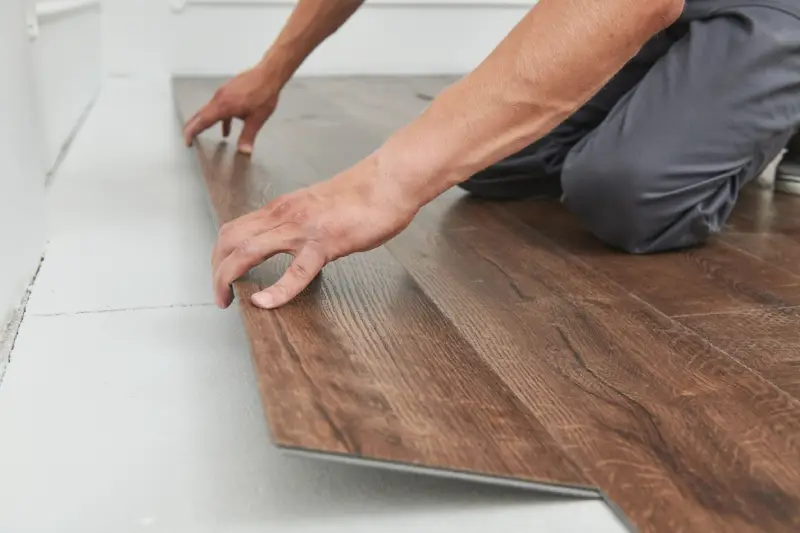
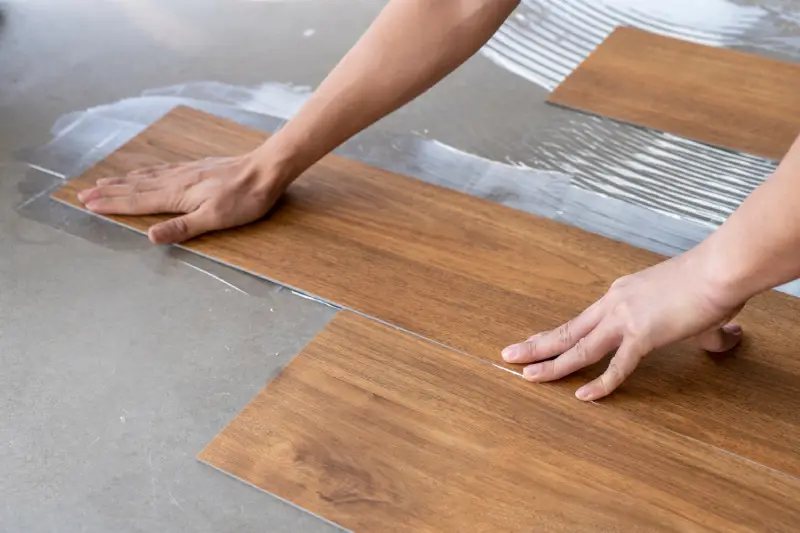
Vinyl Plank Flooring
Vinyl plank flooring consists of individual planks, similar to wood planks used in hardwood flooring projects. To install this type of vinyl, you’ll need to apply the adhesive directly to your subfloor and then place the vinyl plank over top of it. This flooring is durable and often waterproof. This type of vinyl is best used in bathrooms, small spaces, and areas where you want to imitate the look of hardwood flooring.
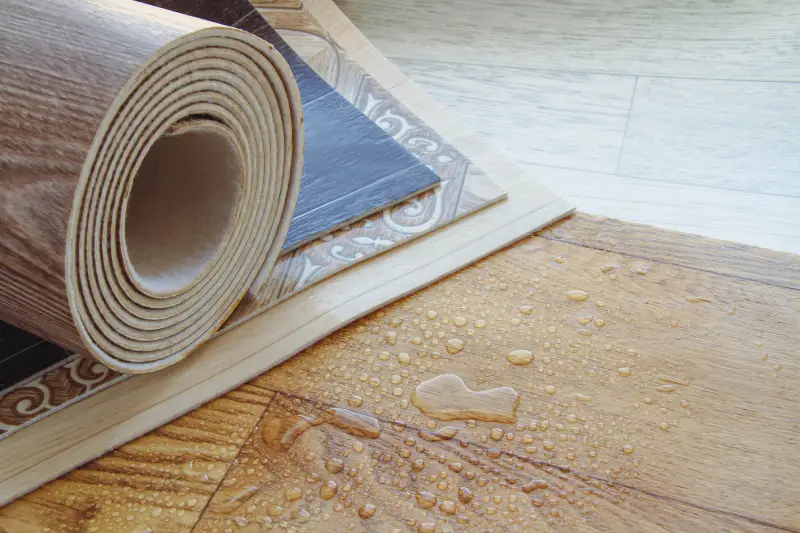
Vinyl Sheet Flooring
Vinyl sheet flooring comes in large rolls, usually measuring six or 12 feet wide. This type of vinyl is the most cost-efficient when it comes to covering larger spaces. Like vinyl plank flooring, it requires the installer to apply adhesive or glue directly to the subfloor before rolling out the flooring.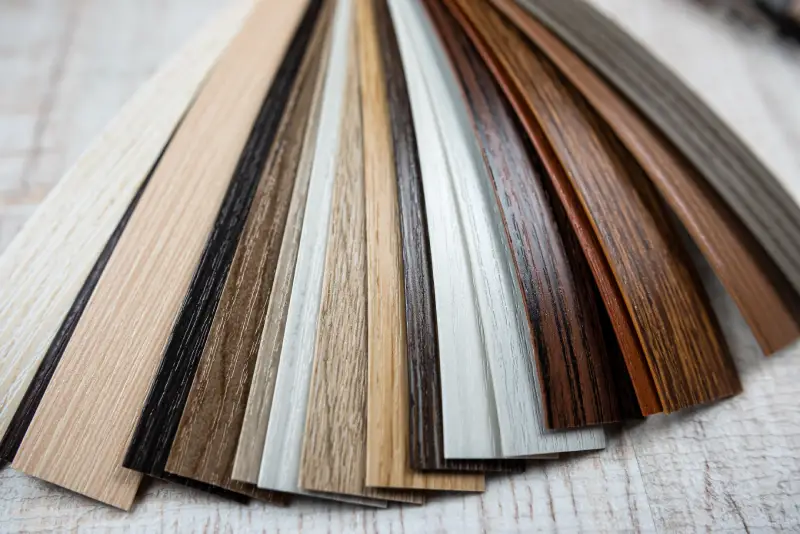
Styles & Colors of Vinyl Flooring
In addition to a variety of types, vinyl flooring is also available in many styles and colors. If you want the appearance of natural hardwood without the high maintenance and installation costs, vinyl planks offer the most cost-effective solution. You can also install luxury vinyl planks for a higher-quality solution. This option features thicker planks, more layers, edge treatments, and other customizations.
Vinyl sheets offer a seamless floor covering for high-moisture areas such as kitchens and bathrooms. They also come in a variety of designs that work well in any home or business. With so many style and color options, you should have no trouble finding a color and style to compliment your home or business decor. Vinyl flooring is also easier and less expensive to repair than wood or tile because it usually only requires replacing one or two pieces instead of an entire area of the floor. Replacing vinyl is also much easier than removing and/or replacing a broken or damaged tile.
The Cost of Vinyl Flooring
Now that you know what vinyl flooring is, let’s review one of its biggest advantages: the cost. True wood, natural stone, or ceramic tile flooring is expensive, but vinyl flooring can give you similar results for a much lower price.
Depending on the size of the area and whether you install the flooring yourself or hire a repair professional, vinyl flooring costs can range as low as a few hundred dollars up to several thousand. Most types of vinyl flooring tend to range between $2 and $5 per square foot for materials and between $3 and $10 for the installation.
When calculating your project costs, don’t forget to include the cost to remove and dispose of your old flooring, the need for a new underlayment, and the layout of your room (more cuts can increase installation/labor costs). Square rooms typically cost less for flooring installation than rooms with hard-to-reach areas, stairs, or other necessary cutouts.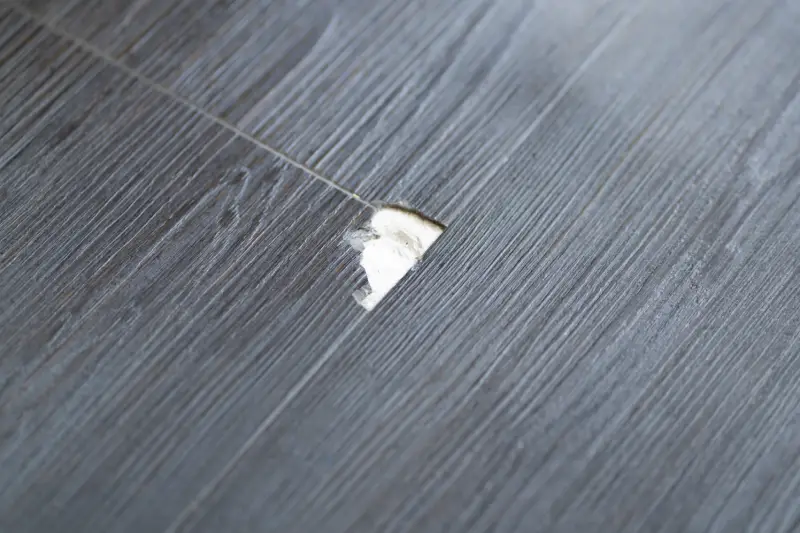
Vinyl Flooring Repair
Another advantage of installing vinyl flooring is that it’s much easier to repair. If you have a vinyl floor that is damaged, contact your local handyman for help. A pro will analyze your flooring and provide a clean repair strategy, including the following:
- Repairing uneven vinyl floors.
- Repairing vinyl floors that are peeling up.
- Replacing stained or damaged vinyl tiles, planks, or sheets.
Depending on the amount of damage and flooring type, a replacement may be a better option. If this is the case, request an estimate and discuss your options.
Ready to Upgrade Your Flooring?
As you can see, vinyl flooring offers many benefits over wood and tile. And while they are easier to install than wood or tile, they still require time, effort, and some level of expertise to ensure the job is done right.
Our experienced team at Mr. Handyman is ready to help you complete all of your home projects. With work that is backed by the Neighborly Done Right Promise™, you can rest assured that your project will be completed to your satisfaction, guaranteed! Call us today to make your appointment with one of our home improvement professionals. If you’re ready to upgrade and install vinyl flooring in your home or business but don't have the time, tools, or patience to get it done, contact your local Mr. Handyman® for help.
 Click to call
Click to call


